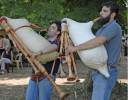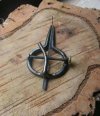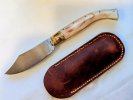Johnnythefox
Gold Member
- Joined
- Feb 16, 2017
- Messages
- 4,688
I found some photos from my Sardinian road trip.
The first time I used my knife bought in Nuoro was sitting on a little wall (in the shade) eating local produce, bread,and delicious cheese.
Its what I love to do, its much better than sitting in a cafe when you are on the open road with a nice view.
The sign from Corsica (the first part of my trip) is a wild card photo of my favourite sign ever.
It says somethingf along the lines of dont wash your animal's in the fountain.
Honestly you can not get more rural and out of the way of city life than that.















The first time I used my knife bought in Nuoro was sitting on a little wall (in the shade) eating local produce, bread,and delicious cheese.
Its what I love to do, its much better than sitting in a cafe when you are on the open road with a nice view.
The sign from Corsica (the first part of my trip) is a wild card photo of my favourite sign ever.
It says somethingf along the lines of dont wash your animal's in the fountain.
Honestly you can not get more rural and out of the way of city life than that.





















